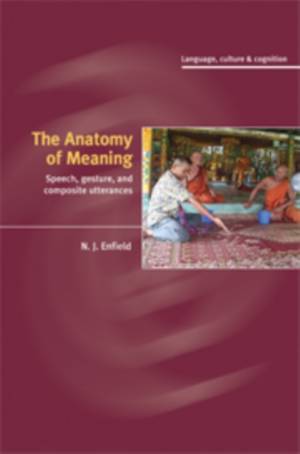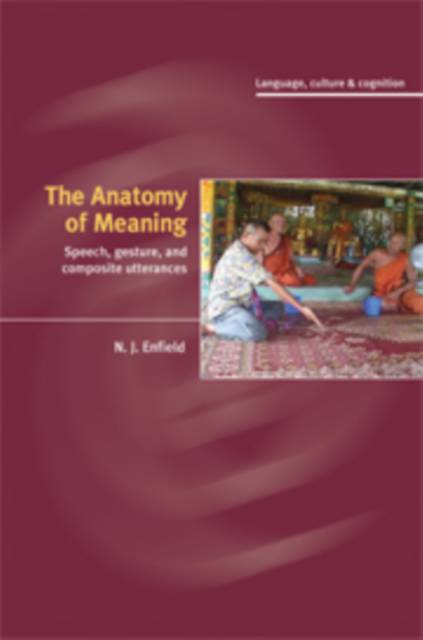
- Afhalen na 1 uur in een winkel met voorraad
- Gratis thuislevering in België vanaf € 30
- Ruim aanbod met 7 miljoen producten
- Afhalen na 1 uur in een winkel met voorraad
- Gratis thuislevering in België vanaf € 30
- Ruim aanbod met 7 miljoen producten
Zoeken
€ 116,45
+ 232 punten
Uitvoering
Omschrijving
How do we understand what others are trying to say? The answer cannot be found in language alone. Words are linked to hand gestures and other visible phenomena to create unified 'composite utterances'. In this book N. J. Enfield presents original case studies of speech-with-gesture based on fieldwork carried out with speakers of Lao (a language of Southeast Asia). He examines pointing gestures (including lip and finger-pointing) and illustrative gestures (examples include depicting fish traps and tracing kinship relations). His detailed analyses focus on the 'semiotic unification' problem, that is, how to make a single interpretation when multiple signs occur together. Enfield's arguments have implications for all branches of science with a stake in meaning and its place in human social life. The book will appeal to all researchers interested in the study of meaning, including linguists, anthropologists, and psychologists.
Specificaties
Betrokkenen
- Auteur(s):
- Uitgeverij:
Inhoud
- Aantal bladzijden:
- 264
- Taal:
- Engels
- Reeks:
- Reeksnummer:
- nr. 8
Eigenschappen
- Productcode (EAN):
- 9780521880640
- Verschijningsdatum:
- 20/04/2009
- Uitvoering:
- Hardcover
- Formaat:
- Genaaid
- Afmetingen:
- 160 mm x 229 mm
- Gewicht:
- 544 g

Alleen bij Standaard Boekhandel
+ 232 punten op je klantenkaart van Standaard Boekhandel
Beoordelingen
We publiceren alleen reviews die voldoen aan de voorwaarden voor reviews. Bekijk onze voorwaarden voor reviews.











